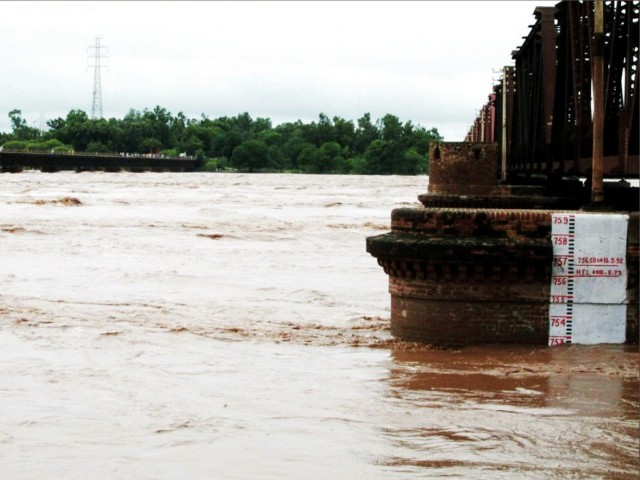
Flood plan awaits nod from Punjab, K-P
“More and more glacial lakes are forming in remote mountain valleys in Gilgit-Baltistan and Chitral district because of warming temperatures. These pose serious risks to the lives and livelihoods of the climate-vulnerable communities,” said Ministry of Climate Change Spokesperson Mohammad Saleem while speaking to the media in Islamabad on Sunday.
In this regard, he said that they were working on a flood control project.
He stated that after completing the first phase of the five-year Glacial Lake Outburst Floods (GLOF) project in 2015, the United Nation’s Green Climate Fund had in October 2016, approved $36 million for a second phase of the GLOF project.
Work on this second phase, he said, is expected to start in the next few months.
Pakistan to observe doubling in high-end flood risk by 2040
Explaining what details of the second phase, he said that it will cover 12 districts of Gilgit-Baltistan (G-B) and Khyber-Pakhtunkhwa (K-P), benefiting 29 million people.
Spelling out the expected outcomes of the project, Saleem said that 95 per cent of households in target communities of K-P and G-B areas will be able to receive support and respond to early warnings about glacial lake outbursts and consequent floods in their areas, taking the appropriate moderating actions to save their lives and livelihoods.
Moreover, it will mitigate climate change impacts and GLOF risks by preventing loss of lives and community infrastructure based on a holistic approach in all seven districts of G-B and five districts of K-P, thus, it would contribute to building climate-resilient and sustainable development in the long-term.
Furthermore, 250 small-scale engineering structures will be established in an attempt to reduce the impacts of GLOF events on livelihoods, such as tree plantation, controlled drainage and mini-dams.
For this purpose, 50 weather monitoring stations will be set up in GLOF-vulnerable areas to gather meteorological data in catchment areas and 408 river discharge sensors will be put in place to obtain river flood data, the spokesperson added.
“Mitigating the growing risks from the glacial lakes outbursts in the country’s north, we are mulling the implementation of the second phase of the GLOF project with the relevant stakeholders including the Global Environment Facility (GEF), UNDP – Pakistan, Pakistan Meteorological Department, Pakistan Flood Commission, National and Provincial Disaster Management Authorities, community-based organisations,” he said.
He further said that the measures would be also taken to enhance food security of the mountain communities in the country’s northern regions and reduce flood-related hazards caused due to deforestation, landslides, land erosion and inefficient water use.
At least, 65,000 women would get training in home gardening and 240 water-efficient farming technologies would be set up and 35,000 hectares of land will be reforested to alleviate devastating impacts of GLOFs, the spokesperson highlighted.
He also highlighted that the project would also strengthen sub-national institutional capacities to plan and implement climate change and disaster-resilient development pathways as proposed outputs and activities will develop the capabilities of local level institutions and federal level institutions to incorporate climate change adaptation considerations into development plans in G-B and K-P.
Saleem explained out that over the past decade, climate change-induced disasters have become increasingly frequent and intense in the valleys on the heel of spiking temperatures, so much so that the floods are now common disasters in these rugged mountainous areas caused by glacial lakes and cloudbursts.
Published in The Express Tribune, May 28th, 2018.




1731916090-0/sabrina-(3)1731916090-0-165x106.webp)

1732012115-0/Untitled-design-(14)1732012115-0-270x192.webp)
1732002687-0/Untitled-design-(11)1732002687-0-270x192.webp)









COMMENTS
Comments are moderated and generally will be posted if they are on-topic and not abusive.
For more information, please see our Comments FAQ